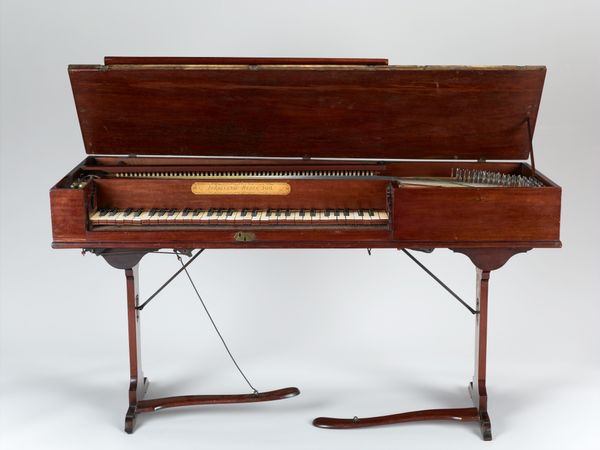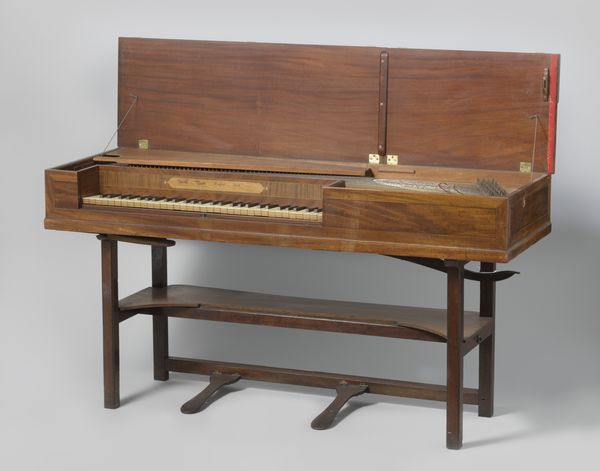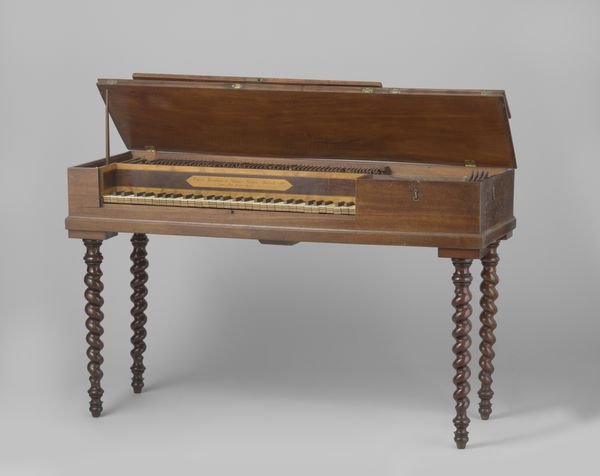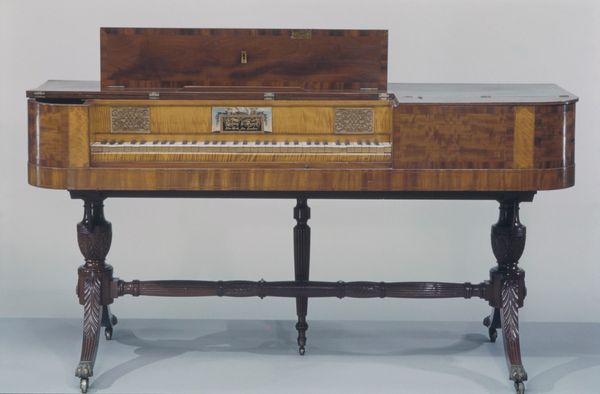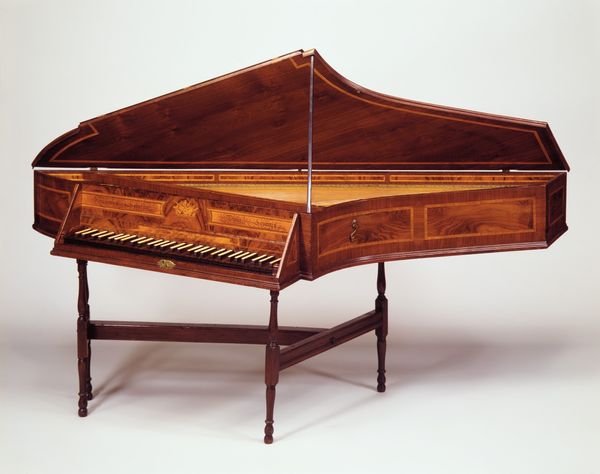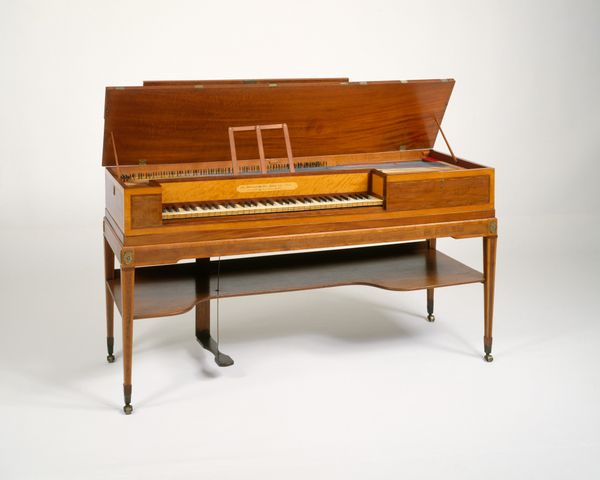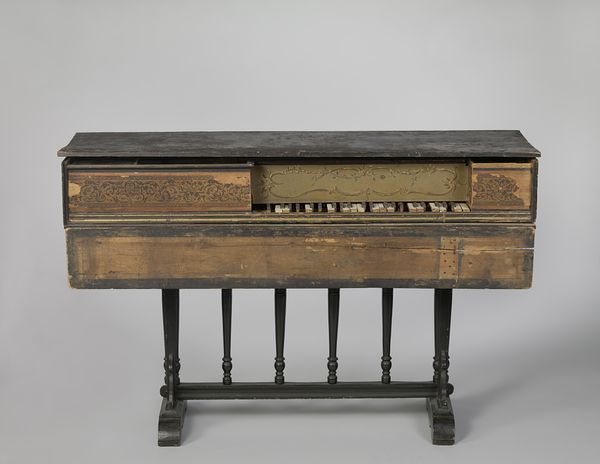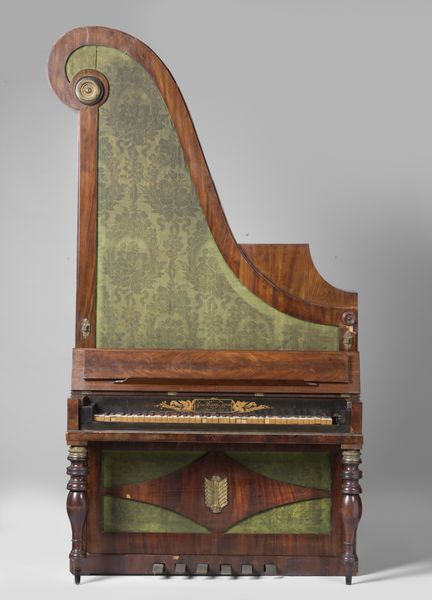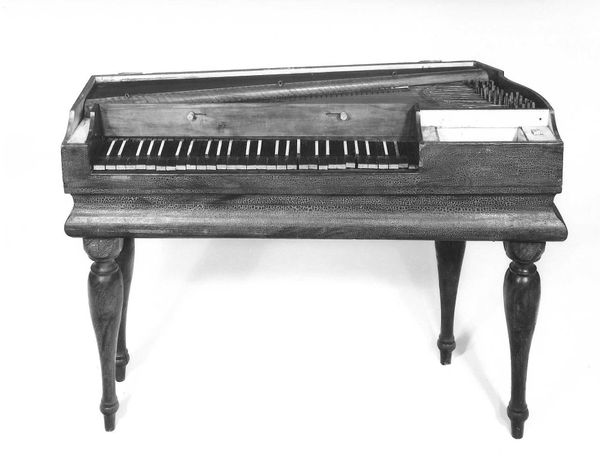
wood
#
neoclacissism
#
wood
#
decorative-art
Dimensions: height 85.0 cm, length 158.0 cm, depth 57.0 cm
Copyright: Rijks Museum: Open Domain
Curator: Immediately, I find this Square piano to be one of somber beauty. The open lid, revealing the instrument’s entrails, is particularly striking. Editor: Indeed, this object crafted circa 1782-1798 by Longman & Broderip compels us to examine more than meets the eye. This square piano is made primarily from wood, an interesting divergence from the period where iron began to make strides. Curator: Absolutely. The floral carvings, so characteristic of Neoclassical aesthetics, create a harmonious visual dialogue with the strict geometry of its overall form. This opposition is fundamental to appreciating the artistic intentions of its makers. Editor: And it invites a reflection upon the division of labor involved. Someone had to procure the materials—likely mahogany. The journey alone! Then, shaping and joining; we're speaking countless hours. The engraved panel and the decorative hardware demonstrate additional specialized workshops participating in production. How might such effort influence musical appreciation at that time? Curator: It transforms the listening experience. The delicate sound emerging from such intricate craftsmanship must have evoked a sense of refinement, connecting material splendor to sonic delight. Note how the clean lines dictate a sense of rational elegance, emphasizing structural clarity over excessive ornamentation. Editor: Exactly. And I would say that Neoclassical order also informs the layout of the instrument, maximizing material efficiency for acoustics as much as a display of status. Consider where the raw wood itself was sourced from and under whose power. Were we to play this object, we would play an instrument bearing the history of labour and industry on a global scale. Curator: A beautiful point; the performance itself becomes a social act— a cultural transaction informed by labor and power. Its structure then invites further interpretation into the broader historical forces shaping musical expression. Editor: It changes the sonic event—musical meaning then extends into a complex, multifaceted performance encompassing its socio-historical genesis. It really makes one listen with historical ears. Curator: Indeed; I leave this interaction seeing an artifact that elevates sensory awareness with sociopolitical understanding. Editor: For me, it prompts me to ask whether the creation and circulation of instruments like these affected access to cultural refinement in Britain during this time? Something for visitors to ponder as they enjoy the sonic texture!
Comments
No comments
Be the first to comment and join the conversation on the ultimate creative platform.
